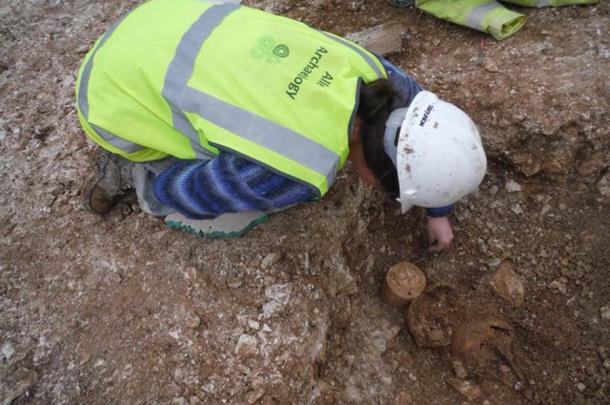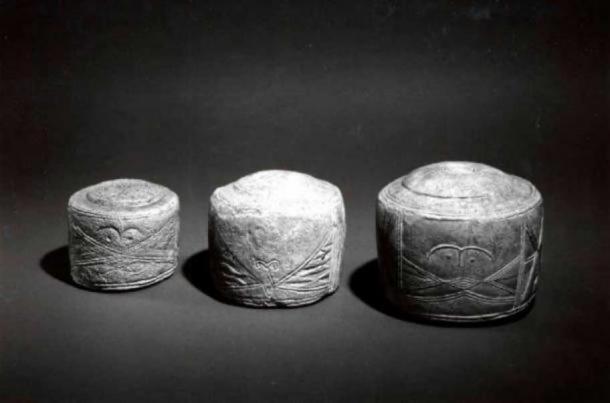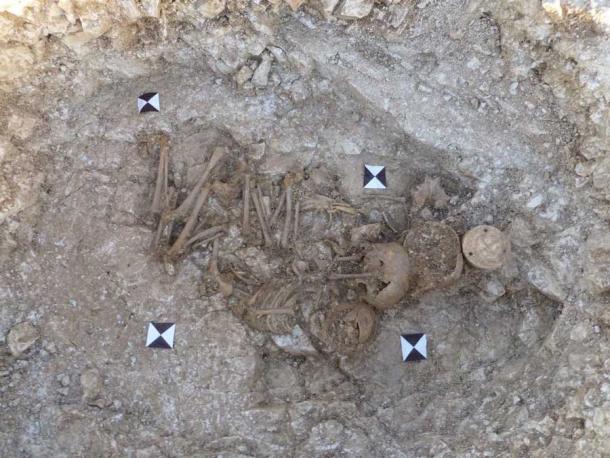
Neolithic Drum Sculpture Declared ‘Most Important Piece of Prehistoric Art’
Archaeologists unearthed a highly unusual 5,000-year-old carved drum ‘sculpture’ made from stone during excavations near the village of Burton Agnes in Yorkshire in northern England. The object was discovered at the site of an old estate in the Yorkshire countryside in 2015, and experts have spent the last few years studying this unique item. They’ve called it one of the most significant examples of prehistoric art ever found on British soil.
The British Museum in London has only now announced this remarkable discovery, which is scheduled to go on display at the Museum on February 17. It will be included in an exhibition dedicated to the Neolithic site of Stonehenge, which will focus on that famed structure’s greater historical context.
The initial stages of construction at Stonehenge were completed approximately 5,000 years ago, and the remarkable carved drum has been dated to that same time period.
While the shape of the small, compact, barrel-shaped object is undeniable, the chalk drum was not actually used as a musical instrument. It must instead be classified as a type of Neolithic stone sculpture, and a most rare one indeed.
"This is a truly remarkable discovery, and is the most important piece of prehistoric art to be found in Britain in the last 100 years," stated Neil Wilkin, the British Museum curator who will be in charge of the upcoming "World of Stonehenge” exhibition.
- British Burial Goods Inspire Poet Laureate’s Imaginarium
- Stonehenge Plaques Hold Secret Cultural Data, Says New Study

The Neolithic drum sculpture in situ being carefully excavated. (Allen Archaeology)
In their announcement, the British Museum referred to the drum as “one of the most elaborately decorated objects of this period found anywhere in Britain or Ireland.” While only three other objects that match this particular style and design have been recovered in the United Kingdom, the experts say the stylistic touches of the drum are similar to those of many other objects recovered from the vicinity of Stonehenge.
Other finds at other locations in the UK also share these stylistic and artistic similarities, revealing the existence of a unified culture that apparently thrived in Neolithic Britain 5,000 years in the past.
Finding the Remnants of a Unified British Neolithic Culture
The Burton Agnes Drum was found inside the grave of three Neolithic period children, who were all buried together. The drum was placed near the head of the oldest child, along with a chalk ball and a polished bone pin.
A ball and several pins of the exact same type were found during excavations at Stonehenge. This is especially notable because the later find is actually 240 miles (380 kilometers) from the Stonehenge site, which is located on the Salisbury Plain in Wiltshire.
Neolithic period communities likely shared “artistic styles, and probably beliefs, over remarkable distances,” British Museum officials explained.
The exterior of the drum is covered with engravings of abstract imagery, with triangles and diamond-shaped figures prominently featured.

Abstract imagery found on the Neolithic drum sculpture. (© The Trustees of the British Museum)
"Analysis of its carvings will help to decipher the symbolism and beliefs of the era in which Stonehenge was constructed," said Wilkin.
This drum is one of four that will now be on display at the Museum. The other three drums were found at the gravesite of a child who was buried elsewhere in Yorkshire, just 15 miles (24 kilometers) away from the children’s gravesite in Burton Agnes.
- ‘World’s Oldest Family Tree’ Revealed in Neolithic Tomb in England
- Functioning Portal To The Otherworld Discovered at Maeshowe

The Folkton drums. (The Trustees of the British Museum/ CC BY NC SA 4.0 )
Uncovered in 1889, these three stone sculptures are known as the Folkton Drums. They’ve been described by Museum officials as “some of the most famous and enigmatic ancient objects ever unearthed in Britain.”
Like the Burton Agnes Drum, the Folkton Drums were sculpted at approximately the same time as initial work began on the monuments of Stonehenge.
"The Folkton drums have long remained a mystery to experts,” Wilkin said, before noting that “this new example finally begins to give us some answers …to my mind, the Burton Agnes drum is even more intricately carved and reflects connections between communities in Yorkshire, Stonehenge, Orkney and Ireland.”.
Revealing a Tragic Loss in Ancient Times
Radiocarbon dating of the bones of one of the three children revealed that the Burton Agnes burial took place sometime between the years 3,0005 and 2,890 BC.
The chalk drum found beside them was some type of ceremonial talisman, archaeologists believe. It was carefully placed to protect the children from harm, as they undertook their perilous journey into the afterworld.

The child grave where the Neolithic sculpture was found. (Allen Archaeology)
There were three holes drilled into the drum, presumably one for each of the three bodies. Two of the children were placed so that they were holding hands, indicating they were friends or siblings in real life.
There is no indication at this point of how the children died, but it seems likely they were all the victims of a single catastrophic event.
Neil Wilkin described the scene of the children and the drum as "highly moving." It is clear their grave was prepared with great care, possibly by their parents or by their community as a whole.
"The emotions the new drum expresses are powerful and timeless,” he said. “They transcend the time of Stonehenge and reflect a moment of tragedy and despair that remains undimmed after 5,000 years.”
Top image: The Neolithic sculpture was found in an East Yorkshire grave, along with a bone pin and a chalk ball thought to be a child's toy. Source: © Trustees of the British Museum
By Nathan Falde















